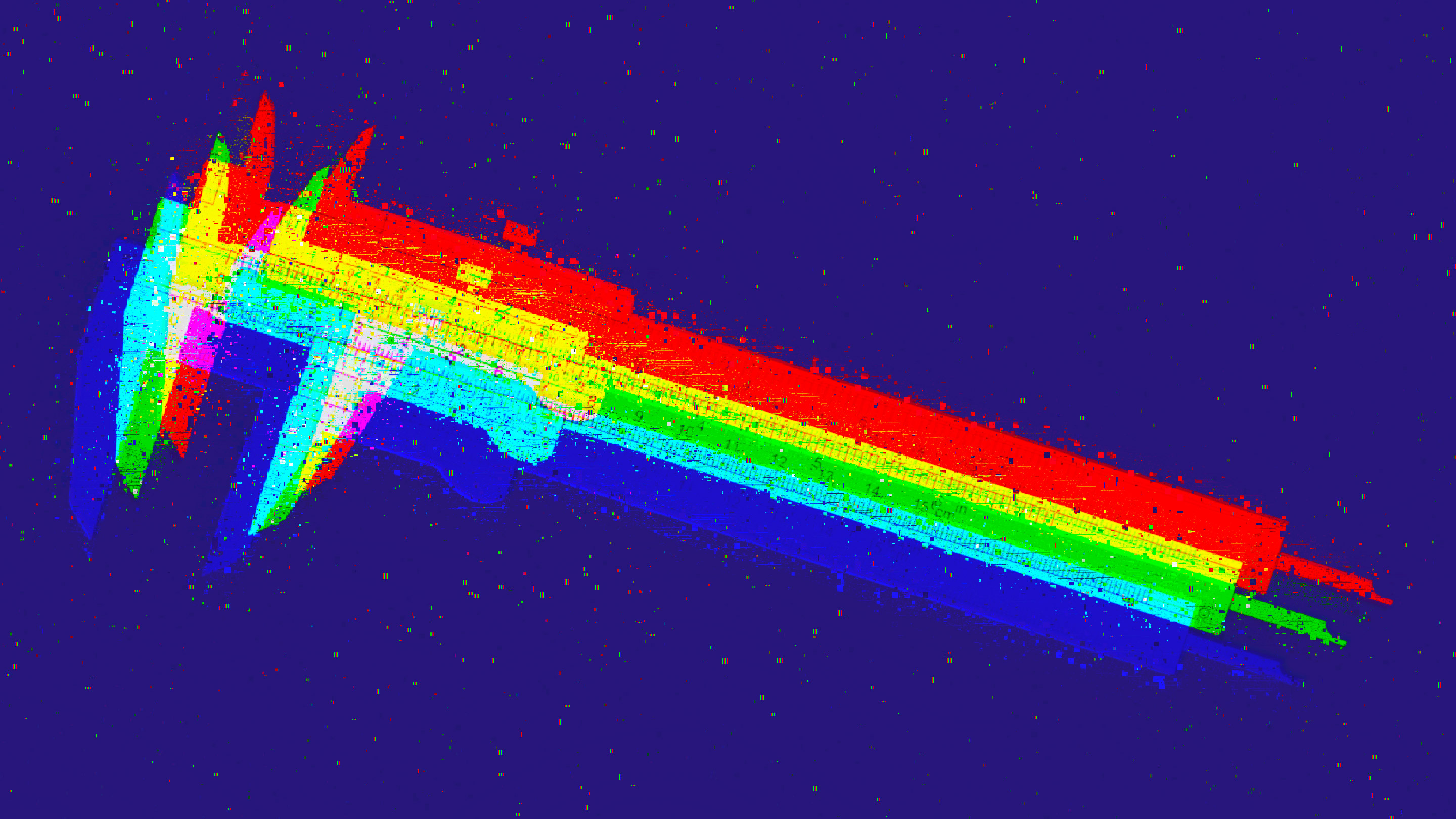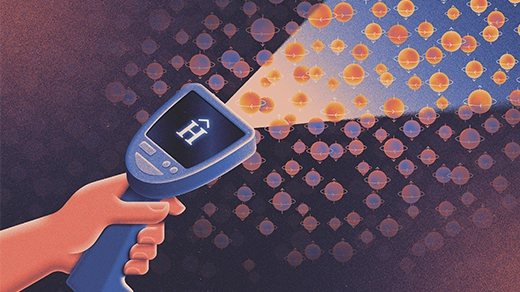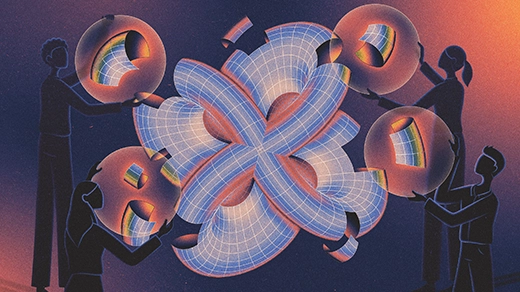Physicists Pin Down How Quantum Uncertainty Sharpens Measurements

Quantum fuzziness can sometimes aid measurement rather than hinder it.
Quanta Magazine
Introduction
Scientific progress has been inseparable from better measurements.
Before 1927, only human ingenuity seemed to limit how precisely we could measure things. Then Werner Heisenberg discovered that quantum mechanics imposes a fundamental limit on the precision of some simultaneous measurements. The better you pin down a particle’s position, for instance, the less certain you can possibly be about its momentum. Heisenberg’s uncertainty principle put an end to the dream of a perfectly knowable world.
In the 1980s, physicists began to glimpse a silver lining around the cloud of quantum uncertainty. Quantum mechanics, they learned, can be harnessed to aid measurement rather than hinder it — the thesis of a growing discipline known as quantum metrology. In 2019, gravitational wave hunters used a quantum metrological technique called quantum squeezing to improve the sensitivity of the LIGO detectors by a whopping 40%. Other groups have employed the phenomenon of quantum entanglement to precisely measure weak magnetic fields.
But the most controversial and counterintuitive strategy for exploiting quantum mechanics to boost precision is called postselection. In this approach, researchers take photons, or particles of light, that carry information about some system of interest and filter some of them out; the photons that survive this filtering enter a detector. Over the past 15 years, experiments using postselection have measured distances and angles remarkably precisely, suggesting that discarding photons is somehow beneficial. “The community still debates how useful it is and whether [postselection is] a genuinely quantum phenomenon,” said Noah Lupu-Gladstein, a graduate student at the University of Toronto.
Now, Lupu-Gladstein and six co-authors have pinpointed the source of the advantage in postselected measurements. In a paper accepted for publication in Physical Review Letters, they trace the advantage to negative numbers that arise in calculations because of Heisenberg’s uncertainty principle — ironically, the same rule that constrains measurement precision in other contexts.
Researchers say that the new understanding forges links between disparate areas of quantum physics and that it could prove useful in experiments that use sensitive photon detectors.
The paper is “quite exciting,” said Stephan De Bievre, a mathematical physicist at the University of Lille in France who was not involved in the research. “It links this negativity, which is a sort of abstract thing, to a concrete measurement procedure.”
Reducing the Workload
To measure a quantity very precisely, physicists often look for a shift in the peaks of a wave, called a phase shift. Suppose, for example, they want to determine the changing distance between two mirrors, signifying that a passing gravitational wave has briefly warped space-time. They’ll first send in a laser beam that bounces back and forth between the mirrors. A displacement of one mirror will shift the peaks of the laser light; physicists then measure this phase shift by detecting the light leaving the system.
But light is composed of individual photons that only collectively behave like a wave. Each photon that physicists detect will deliver imperfect information about the light’s phase shift (and thus the mirror displacement). So a precise estimate requires averaging many measurements of individual photons. The goal of quantum metrology is to reduce the workload by increasing the information gained per photon.
How postselection achieves this has been a mystery. The new paper shows how.
Negative Chances
In quantum mechanics, the equations defining a particle don’t say exactly where it is, or exactly how fast it’s going. Instead, they give a probability distribution of positions at which you might observe the particle, and another probability distribution for possible values of its momentum. But recall that Heisenberg’s uncertainty principle prevents precise simultaneous measurements of position and momentum (and other pairs of properties). This means you can’t multiply the two probability distributions to get the “joint probability distribution” representing the likelihood of different combinations of position and momentum, the way you can in classical probability theory. “If you try to define joint probabilities of two observables, then all hell breaks loose,” said De Bievre.
Instead, quantum probabilities combine in a more complicated way. One approach, derived independently by the American physicist John Kirkwood in 1933 and the British physicist Paul Dirac in 1945, defines the probabilities of different combinations of quantum properties by breaking the usual rule that probabilities must be positive numbers. In the Kirkwood-Dirac “quasiprobability” distribution, it’s as if some combinations of properties have a negative chance of happening.
In 2020, David Arvidsson-Shukur at the University of Cambridge, Nicole Yunger Halpern, now at the University of Maryland, and four other theorists developed a framework for describing quantum metrology experiments using the Kirkwood-Dirac distribution. This allowed them to explore how a quantum advantage might arise during postselection.
Arvidsson-Shukur and Yunger Halpern then teamed up with experimentalists in Toronto to develop their model further. In the new paper, they derived a quantitative relationship between the negativity of the Kirkwood-Dirac distribution and the information gained per detected photon in experiments with postselection. They showed that without negativity — that is, when measured properties of the photon aren’t related by the uncertainty principle, and their Kirkwood-Dirac distribution thus stays positive — postselection offers no advantage. But when there’s a high degree of negativity, the information gain shoots up: You can in principle resolve any phase shift, no matter how small, using only a single postselected photon.
To test this idea in an experiment, the researchers sent a laser through a thin quartz slab, which rotated the photons’ polarization by an amount dependent on the slab’s angle. The goal was to precisely estimate that angle. The physicists used polarization-sensitive optical components to filter photons, routing them into or away from a detector based on their polarization.
Like position and momentum, different directions of polarization are related by the uncertainty principle: The more precisely you measure how polarized a photon is along the x-axis, say, the less certain you can be of its polarization along the y-axis. By rotating the axes of the optical components relative to one another, the experimentalists could therefore change the amount of uncertainty in the measurement, and thus the negativity of the Kirkwood-Dirac distribution. The rotations also affected which photons got postselected.
By repeating the experiment in many different configurations, they showed that the information about the angle of the slab obtained from each detected photon increased linearly with the degree of negativity, just as their theory predicted.
No Free Lunch
Although maximizing the negativity makes individual photons more informative, it also means fewer photons get postselected. The probability that a photon survives postselection depends on the sum of the elements of the Kirkwood-Dirac distribution; in a distribution with high negativity, negative and positive quasiprobabilities nearly cancel out, and few photons make it to the detector. This trade-off between increased information per detected photon and fewer such photons guarantees that postselection doesn’t increase the total amount of information carried by all photons in an experiment. “We’re not getting free lunch,” Lupu-Gladstein said, “but we’re getting the lunch that we paid for.”
Still, some experiments benefit from using postselection to concentrate all relevant information into a handful of photons. State-of-the-art detectors often overload when exposed to too many photons at once. Postselection can serve to juice up the weak light that these detectors can handle.
Michael Raymer, a quantum physicist at the University of Oregon, said that “the study provides new insights into the sensitivity” of optical measurements. He cautions, though, that there may be other ways to interpret the origin of postselection’s advantage.
Recently, Yunger Halpern and other theorists showed that Kirkwood-Dirac negativity also underlies quantum behavior in contexts besides metrology, including quantum thermodynamics and fast information scrambling in black holes. The researchers say that bridges between these domains could foster further insights, or metrological advantages.
“One of my main hopes for this work is that it now opens the floodgates for people who are studying black holes to maybe say something about metrology,” said Lupu-Gladstein.



